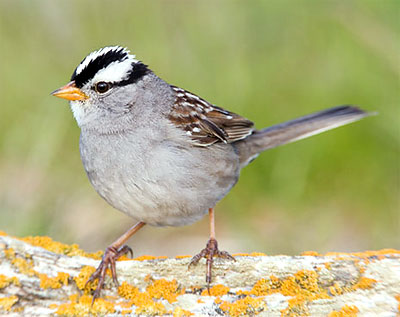
In Canada and in the southern United States, or anywhere in between at migration time, a white-crowned sparrow is nothing much: a mere bit-part player in the continent-wide drama of wildlife.
When it misses its way and turns up in north Norfolk, it becomes a superstar. It’s not a rare bird, because the species is not under any kind of threat: it’s a rare bird in Britain because it’s not supposed to be here. It has somehow absent-mindedly crossed the Atlantic: perhaps it asked directions from a New York taxi driver.
At least it has conformed to some of the greatest traditions in the history of the study of wildlife by attracting the notice of a vicar: in this case, Richard Bending, a retired clergyman who lives in Cley. Cley (rhyming with sly) is a birding mecca: but it’s the soft, marshy seashore that brings in the boys with the telescopes: not, in the main, a vicar’s back garden half a mile from the sea.
Within hours of publicising the find dozens of bird-watchers descended on the quiet village with their cameras. Richard Bending said they believed the bird may have been blown off course in a storm in Canada and was blown to Norfolk or hitched a ride on a boat.
This is a freak, a curiosity, a one-off. To most bird-watchers, it is nothing more than an amusing tale. To a scientist, a serious ornithologist, it means nothing at all. It is more interesting to a student of the vagaries of stratospheric winds, or for that matter, shipping – the bird may have been blown here, or it may have got shut in a ship’s hold.
But twitchers are not scientists. They are sportsmen, in hard training, and at times like this they are eaten up with the competitive urge. If they see the white-crowned sparrow, their list of British birds goes up. But – and this is even more important – if they fail, other people’s lists will rise at their expense.
Hence the feeding frenzy at Cley, which has been the site of a serious invasion of men with terrifyingly expensive optical glass.
Simon Barnes: On the sparrow trail
www.timesonline.co.uk








